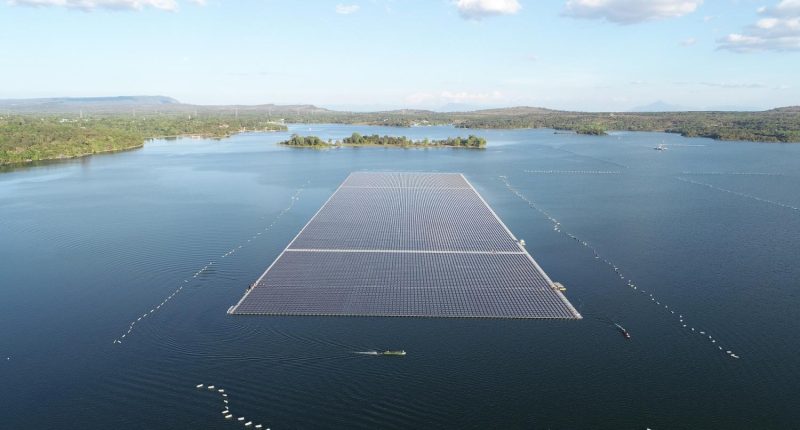The Electricity Generating Authority of Thailand (EGAT) is advancing its renewable energy strategy by developing 14 new floating solar farms. These projects, part of Thailand’s 2024 Power Development Plan (PDP), aim to bolster sustainable energy production while reducing reliance on fossil fuels.
Floating Solar Farms: A Step Towards Renewable Energy
Expanding Renewable Energy Capacity
Details of the New Projects
The 14 floating solar farms will have a combined capacity of 2,656 megawatts, strategically located on reservoirs at seven major hydroelectric dams, including:
- Bhumibol Dam
- Sirikit Dam
- Srinakarin Dam
- Vajiralongkorn Dam
- Chulabhorn Dam
- Bang Lang Dam
- Rajjaprabha Dam
EGAT plans to start construction on three key projects in 2025, with a total capacity of 348 megawatts. The largest project will be at Bhumibol Dam (158 megawatts), followed by Srinakarin Dam (140 megawatts) and Vajiralongkorn Dam (50 megawatts).
Investment and Operational Timeline
The three projects will require an investment of 13 billion baht (US$374 million), with operations projected to begin between 2026 and 2027.
EGAT’s Renewable Energy Vision
Building on Past Success
Completed Floating Solar Farms
EGAT has already completed two floating solar farm projects:
- Sirindhorn Dam (Ubon Ratchathani): Launched in December 2021 with a capacity of 45 megawatts.
- Ubolratana Dam (Khon Kaen): Began operations in March 2024, generating 24 megawatts.
These successes highlight the feasibility and benefits of integrating solar farms into hydroelectric dam reservoirs.
Aligning with Thailand’s Power Development Plan
2024 PDP Goals
The 2024 PDP outlines ambitious renewable energy targets:
- Increasing the renewable energy share from 20% in 2023 to 51% by 2037.
- Reducing reliance on fossil fuels from 70% in 2023 to 45% by 2037.
Floating solar farms are a cornerstone of this strategy, providing clean energy while optimizing existing infrastructure.
Challenges and Future Prospects
Overcoming Past Hurdles
EGAT’s initial plan to expand floating solar capacity to 5,000 megawatts over two decades faced regulatory challenges. Despite setbacks, the 2024 PDP maintains a total target of 2,725 megawatts from 16 projects.
Integration with the National Grid
EGAT is preparing a proposal for the Energy Ministry to approve the connection of new floating solar farms to the national power grid. This integration will ensure a steady supply of renewable energy across the country.
Leading the Way in Renewable Energy
Thailand’s investment in floating solar farms reflects a strong commitment to sustainability and innovation. By leveraging existing hydroelectric reservoirs, EGAT is setting a benchmark for renewable energy solutions.
Ref – Thaiger









